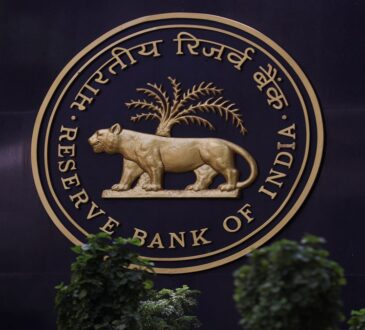
Driven by a mix of political and economic factors, the greenback is gradually losing its global dominance. Market sentiment regarding the increasing probability of the Fed adopting a dovish stance, the trend toward “de-dollarization” and a slowdown in the country’s growth are contributing to the greenback’s losses.
These factors increase the need for investors to diversify and hedge their portfolios by taking into account alternative currencies, as the currency market is often driven by investor sentiment instead of economic fundamentals of supply and demand.
Let us look at factors contributing to the greenback’s subdued future expectations.
Increasing Probability of a Dovish Fed
The value of the greenback is closely related to the Fed’s monetary policies. The increasing probability of the Fed adopting a dovish stance and cutting interest rates in 2024 results in a weakened U.S. Dollar, leading to the currency’s depreciation.
A Fed rate cut might prompt investors to seek higher-yielding opportunities elsewhere, resulting in a redirection of funds away from the United States. This reduces demand for the greenback, weakening it as a result and reducing its value. Additionally, when more money enters circulation, the law of supply and demand devalues the existing currency.
According to Reuters, Federal Reserve Chair Jerome Powell’s cautious tone on future rate hikes left the market interpreting his remarks as dovish, leading investors to anticipate that the Fed may have concluded its rate hikes for the time being.
Per U.S. rate futures, the probability of the Fed cutting its interest rate in March next year was 64%, significantly higher than CME’s FedWatch tool’s 43%. Similarly, the likelihood of a rate cut in May 2024 increased to 90% from the previously estimated 76%.
Trend Toward De-Dollarization
The U.S. Dollar, as the world’s reserve currency, stands as the predominant choice for international trade transactions. With around 60% of global reserves held in dollar-denominated assets, according to the International Monetary Fund, the greenback enjoys a dominant position, ensuring the currency’s high demand.
The greenback has enjoyed the status of the world’s reserve currency since World War II. However, the macro-geopolitical environment and other economic factors are leading to countries seeking alternative currencies in a bid to reduce the greenback’s dominance. This could result in the demand for the U.S. Dollar decreasing, depreciating the currency.
According to Business Insider, the surge in the value of the greenback against many currencies has caused imports to become significantly costlier for emerging economies, resulting in countries like Brazil, Argentina, Bangladesh, and India seeking alternative currencies and assets to serve as backup options for trade and payments.
Another major reason behind the U.S. Dollar becoming a global reserve currency was its adoption by the Gulf countries to trade oil. However, the shale oil revolution and current relations between the United States and Saudi Arabia raise the possibility of Saudi Arabia moving away from its greenback-denominated oil pricing, potentially reducing the demand for the currency significantly.
Slowing Growth Estimates
The economy’s performance is pivotal in determining whether to buy or sell dollars. A robust economy tends to attract global investment due to its perceived stability and the potential for achieving satisfactory investment returns.
The increasing inflow of foreign investments into the United States creates a robust capital account and results in increased demand for the greenback, a key tailwind for the currency, which increases its value.
According to Reuters, U.S. manufacturing remained subdued in November, showing a continued decline in factory employment. Hiring declined while layoffs increased, indicating further signs that the largest global economy was starting to slow down, following robust growth in the previous quarter.
Additionally, reduced discretionary consumer spending, as highlighted by the Fed’s “Beige Book,” indicates a deceleration in economic activity in the United States in recent weeks, according to the Mint.
ETFs in Focus
Investors can look to hedge themselves against the likelihood of the greenback depreciating and diversify their portfolios by increasing their exposure to other currencies.
Per a Reuters poll of FX strategists, the dollar is projected to gradually lose its dominance over other G10 currencies in 2024. This shift comes alongside a more pessimistic outlook for the currency, primarily driven by expectations of interest rate cuts by the U.S. Federal Reserve in the upcoming year, according to Reuters.
Invesco DB U.S. Dollar Index Bearish Fund (UDN – Free Report)
Invesco DB U.S. Dollar Index Bearish Fund offers exposure to a basket of currencies relative to the greenback, rising when the dollar depreciates. UDN is an appropriate option for investors with a bearish outlook on the U.S. Dollar.
Invesco DB U.S. Dollar Index Bearish Fund has gained 3.67% over the past year and 1.2% over the past month.
Investors can also look into the following funds that provide exposure to the basket of currencies tracked by the U.S. Dollar Index (USDX), relative to the greenback, rising when the dollar depreciates. Investors with a bearish outlook on the U.S. Dollar can opt for these funds.
Invesco Currencyshares Japanese Yen Trust (FXY) – has gained 1.73% over the past month but has lost 7.59% over the past year.
Invesco CurrencyShares Euro Currency Trust (FXE) – has gained 0.61% over the past month and 4.43% over the past year.
Invesco CurrencyShares Canadian Dollar Trust (FXC) – has gained 1.01% over the past month and 2.65% over the past year.
Invesco CurrencyShares Swiss Franc Trust (FXF) – has gained 2.06% over the past month and 7.23% over the past year.
Invesco CurrencyShares British Pound Sterling Trust (FXB) – has gained 1.73% over the past month and 6.39% over the past year.
WisdomTree Emerging Currency Strategy Fund (CEW – Free Report)
The WisdomTree Emerging Currency Strategy provides exposure to currencies of select emerging market countries across Latin America, Asia, emerging Europe and the Middle East/Africa Region relative to the U.S. Dollar.
According to Reuters, many emerging market currencies are anticipated to regain losses experienced in 2023 and demonstrate modest upward trends against the dollar in the coming year.
WisdomTree Emerging Currency Strategy ETF has gained 4.69% since the start of October and 9.70% over the past year.
Alternative Route With Digital Currencies
Bitcoin, the leading cryptocurrency globally, surpassed the $42,000 milestone, marking its first climb to this level since April 2022, reflecting a remarkable 142% year-over-year surge (Read: Bitcoin Reaches $42,000: 5 ETFs More Than Double in 2023).
De-dollarization can also create opportunities in digital currencies. Investors with a risk appetite can look at Bitwise Crypto Industry Innovators ETF (BITQ – Free Report) and Blockchain & Bitcoin Strategy ETF (BITS – Free Report) . However, cryptocurrency remains a volatile market.
Want key ETF info delivered straight to your inbox?
Zacks’ free Fund Newsletter will brief you on top news and analysis, as well as top-performing ETFs, each week.




